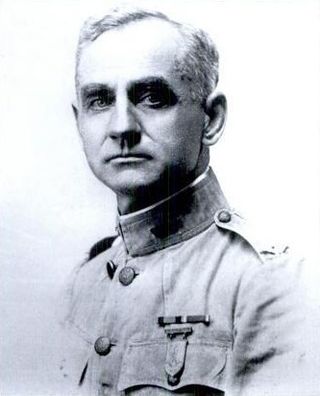American state election
| |||||||||||||||||
| |||||||||||||||||
| |||||||||||||||||
The 1874 Michigan gubernatorial election was held on November 3, 1874. Incumbent Republican John J. Bagley defeated Democratic nominee Henry Chamberlain with 50.37% of the vote.
| |||||||||||||||||
| |||||||||||||||||
| |||||||||||||||||
| Elections in Michigan |
|---|
 |
The 1874 Michigan gubernatorial election was held on November 3, 1874. Incumbent Republican John J. Bagley defeated Democratic nominee Henry Chamberlain with 50.37% of the vote.
| Party | Candidate | Votes | % | |
|---|---|---|---|---|
| Republican | John J. Bagley (incumbent) | 111,519 | 50.37 | |
| Democratic | Henry Chamberlain | 105,550 | 47.67 | |
| Prohibition | Thomas E. Carpenter | 3,937 | 1.78 | |
| Write-ins | 417 | 0.19 | ||
| Total votes | 221,423 | 100 | ||
| Republican hold | ||||

The 1964 United States Senate elections were held on November 3. The 33 seats of Class 1 were contested in regular elections. Special elections were also held to fill vacancies. They coincided with the election of President Lyndon B. Johnson by an overwhelming majority, to a full term. His Democratic Party picked up a net two seats from the Republicans. As of 2022, this was the last time either party has had a two-thirds majority in the Senate, which would have hypothetically allowed the Senate Democrats to override a veto, propose constitutional amendments, or convict and expel certain officials without any votes from Senate Republicans. In practice, however, internal divisions effectively prevented the Democrats from doing so. The Senate election coincided with Democratic gains in the House in the same year.

The 1960 United States Senate elections coincided with the election of John F. Kennedy as president on November 8, 1960. The 33 seats of Class 2 were contested in regular elections. A special election was also held on June 28, 1960, for a mid-term vacancy in North Dakota. The Republicans gained two seats at the expense of the Democrats. However, Republican Senator-elect Edwin Keith Thomson of Wyoming died December 9, 1960, and was replaced by appointee Democratic John J. Hickey at the beginning of the Congress, reducing Republican gains to one seat.

The 1910–11 United States Senate election were held on various dates in various states. As these U.S. Senate elections were prior to the ratification of the Seventeenth Amendment in 1913, senators were primarily chosen by state legislatures. Senators were elected over a wide range of time throughout 1910 and 1911, and a seat may have been filled months late or remained vacant due to legislative deadlock. However, some states had already begun direct elections during this time. Oregon pioneered direct election and experimented with different measures over several years until it succeeded in 1907. Soon after, Nebraska followed suit and laid the foundation for other states to adopt measures reflecting the people's will. By 1912, as many as 29 states elected senators either as nominees of their party's primary or in conjunction with a general election.

The 1874 South Carolina gubernatorial election was held on November 3, 1874, to select the governor and lieutenant governor of the state of South Carolina. Daniel Henry Chamberlain won the election and became the 76th governor of South Carolina.

The 2010 congressional elections in Alabama were held on November 2, 2010, to determine who will represent the state of Alabama in the United States House of Representatives. Alabama has seven seats in the House, apportioned according to the 2000 United States Census. Representatives are elected for two-year terms; those elected will serve in the 112th Congress from January 3, 2011, until January 3, 2013. The primary elections were held on June 1, with the runoff on July 13.

The 1874–75 United States Senate elections were held on various dates in various states. As these U.S. Senate elections were prior to the ratification of the Seventeenth Amendment in 1913, senators were chosen by state legislatures. Senators were elected over a wide range of time throughout 1874 and 1875, and a seat may have been filled months late or remained vacant due to legislative deadlock. In these elections, terms were up for the senators in Class 1.

The 1944 United States Senate election in California was held on November 7, 1944.

The 1914 Wisconsin gubernatorial election was held on November 3, 1914.

The 1920 Wisconsin gubernatorial election was held on November 2, 1920.

The 1922 Wisconsin gubernatorial election was held on November 7, 1922.

The 1946 Massachusetts general election was held on November 5, 1946, throughout Massachusetts. Primary elections took place on June 18.

The 1872 Michigan gubernatorial election was held on November 5, 1872. Republican nominee John J. Bagley defeated Democratic nominee William Montague Ferry Jr. with 61.93% of the vote.

Henry Chamberlain was a Michigan politician.

The 1954 South Dakota gubernatorial election was held on November 2, 1954.

The 1874 Connecticut gubernatorial election was held on April 6, 1874. Incumbent governor and Democratic nominee Charles R. Ingersoll defeated Republican nominee Henry B. Harrison with 50.87% of the vote.

The 1869 Massachusetts gubernatorial election was held on November 2.

The 1942 Wisconsin gubernatorial election was held on November 3, 1942.

The 1916 Illinois lieutenant gubernatorial election was held on November 7, 1916. It saw the election of Republican former governor John G. Oglesby to a second nonconsecutive term.
The 1868 Maine gubernatorial election was held on September 14, 1868. Incumbent Republican Governor and war hero Joshua Chamberlain defeated the Democratic candidate Eben F. Pillsbury.
The 1867 Maine gubernatorial election was held on September 9, 1867. Incumbent Republican Governor and war hero Joshua Chamberlain defeated the Democratic candidate Eben F. Pillsbury.